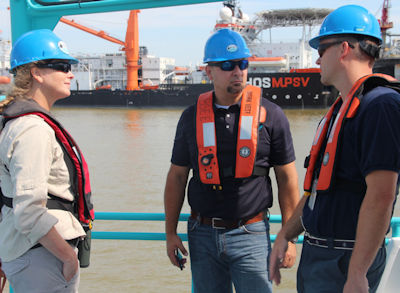Regulatory Agencies
Bureau of Safety and Environmental Enforcement (BSEE)
The Bureau of Safety and Environmental Enforcement (BSEE) is responsible for safety and environmental oversight of offshore oil and gas operations, including permitting and compliance inspections, of offshore oil and gas operations as required in 30 CFR 250.
- BSEE is involved in the approval of oil and gas plans, facilities, and operations. The process includes reviews where there is much emphasis on design, operations, and maintenance.
- BSEE monitors compliance with the regulations throughout the permitting process and operations. Throughout the drilling and production phases, BSEE inspects the operations to ensure compliance with regulations, lease terms and statutes. This further ensures operational safety and pollution prevention. It also requires that drilling personnel be trained in well control.
Bureau of Ocean Energy Management (BOEM)
The Bureau of Ocean Energy Management (BOEM) is an agency responsible for managing the development of U.S. Outer Continental Shelf energy, mineral, and geological resources, and oversees the leasing of offshore lands for energy development, including oil, gas, and renewable energy projects.
BOEM works closely with BSEE to ensure safety requirements are integrated throughout the lifecycle of offshore operations. After BOEM grants a lease, BSEE takes the lead in operational oversight, such as inspecting rigs and enforcing safety protocols. BOEM and BSEE collaborate on the development of standards for equipment and procedures, ensuring they align with both environmental and safety objectives.
American Petroleum Institute (API)
SEMS incorporates the elements of American Petroleum Institute's API Recommended Practice 75, Recommended Practice for a Safety and Environmental Management System for Offshore Operations and Assets. It's aim is to focus attention, resources, and initiatives on recognizing and managing all aspects of safety and health management and the underlying safety culture to promote continuous improvements in safety and environmental performance.
Knowledge Check Choose the best answer for the question.
1-2. Which regulatory agency inspects the offshore rig operations to ensure compliance with regulations
You forgot to answer the question!

